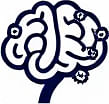Antifragility: A Key Mental Model for Growth and Adaptation
 by Lilian Nienow
by Lilian Nienow
Antifragility goes beyond resilience, allowing systems and individuals to thrive from disorder and uncertainty. This mental model, drawn from ideas like those of Nassim Taleb, offers practical ways to build strength through challenges in business, psychology, and daily life.

Antifragility represents a concept that helps individuals and organizations gain from uncertainty and stress. Unlike simple resilience, which means bouncing back, antifragility involves improving through exposure to volatility.
In essence, this mental model shows how certain things become stronger when faced with problems. For example, muscles grow after exercise-induced strain, illustrating how disorder can lead to enhancement. This idea applies across various fields, offering a framework for personal and professional development.
To explore further, consider how resilience differs. While resilience maintains stability, antifragility actively uses disruptions for advantage. In business, companies that adapt through market changes often emerge stronger. A startup might fail initially but learn from mistakes, leading to better strategies later.
One way to apply this model is in psychology. People who view setbacks as opportunities for growth tend to develop mentally. For instance, someone dealing with failure in a project could use that experience to refine skills, turning potential weaknesses into assets.
In practical terms, building antifragility involves small, intentional steps. Start by embracing variability in daily routines. Trying new approaches at work or in learning can create a buffer against larger issues. Lists of strategies can help clarify this:
- Expose yourself to controlled challenges to build tolerance.
- Diversify resources to avoid over-reliance on one element.
- Reflect on past disruptions to identify patterns of growth.
From a cognitive perspective, this mental model encourages rethinking how we process information. The brain, when challenged with new problems, forms stronger neural connections over time. This process supports ongoing learning and adaptability, essential for professionals in dynamic environments.
Historically, antifragility appears in nature and human endeavors. Evolution thrives on variation and selection, where species adapt through environmental pressures. Similarly, in society, economies that recover from downturns often innovate more effectively afterward.
For lifelong learners, adopting this approach means seeking out discomfort deliberately. Reading diverse materials or engaging in debates can sharpen critical thinking. The key is to avoid fragility by not shielding oneself from all risks, as that can lead to stagnation.
In business strategies, leaders use antifragility to foster innovation. Teams that experiment with ideas, even if some fail, create a culture of continuous improvement. This method contrasts with rigid plans that break under pressure.
Moreover, the benefits extend to health and well-being. Physical activities that stress the body appropriately, like varied workouts, promote longevity. Mental exercises, such as puzzles, keep the mind agile.
To measure progress, track how responses to events evolve. Over time, individuals might notice quicker recoveries and gains from obstacles. This tracking reinforces the model's value in everyday life.
Ultimately, antifragility offers a pathway to thrive amid uncertainty. By integrating this mental model, curious minds and professionals can achieve greater cognitive development and success.
